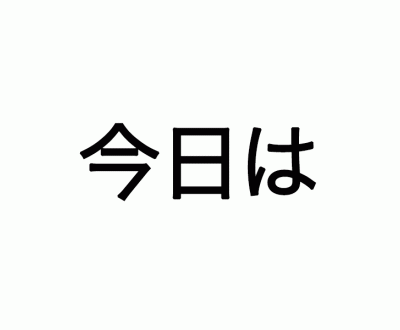How to write the date in Japanese
Telling the date in Japanese is not awfully complicated. Here is a short summary of how to express the date in Japanese and how to refer to and pronounce the names of the days, months and years.
In order to say the date in Japanese, you can for example say 今日は 2025 年2月17日です。 Here are the elements of this sentence presented separately:
- 今日は kyô wa: today...
- 2025年 ni-sèn' ni-jû-go-nèn' : year 2025
- 2月 ni-gatsu: February
- 17日 jûshichi-nichi: the 17th
- です desu: to keep things simple, the verb "to be"
The order is reversed compared to English: the year comes first, then the month and finally the day; this is the “big endian” format, which is widely used in Asia.
What follows is a detailed account of each element in the sentence above.
The years in Japanese
Just mention the year concerned and then add the kanji 年 nen for year.
The Japanese will typically use the Gregorian calendar although they will also often use the Japanese periods based on the reigns of Japanese emperors. Since May 2019, Japan has entered the 令和 reiwa imperial era. You will see this printed on tickets for example when you travel to Japan.
Here are the correspondences of the years:
There is actually an application called Gengou Free to easily convert any year of the Gregorian calendar into its traditional Japanese counterpart.
The months in Japanese
It works in the same way for Japanese months: First write the number corresponding to the month concerned, then the kanji 月 gatsu. Thus:
- 1月 ichi-gatsu: January
- 2月 ni-gatsu: February
- 3月 san-gatsu: March
- 4月 shi-gatsu: April
- 5月 go-gatsu: May
- 6月 roku-gatsu: June
- 7月 shichi-gatsu: July
- 8月 hachi-gatsu: August
- 9月 ku-gatsu: September
- 10月 jû-gatsu: October
- 11月 jûichi-gatsu: November
- 12月 jûni-gatsu: December
The days of the week and of the month in Japanese
The days of the week
The week officially begins on Sunday.
- 日曜日 nichi-yôbi: Sunday (“Day of the Sun”)
- 月曜日 getsu-yôbi: Monday ("Day of the Moon")
- 火曜日 ka-yôbi: Tuesday ("Day of Fire")
- 水曜日 sui-yôbi: Wednesday ("Day of Water")
- 木曜日 moku-yôbi: Thursday ("Day of Wood")
- 金曜日 kin-yôbi: Friday ("Day of Gold")
- 土曜日 do-yôbi: Saturday ("Day of the Earth")
The days of the month
They follow a simple rule (number + 日 nichi) but almost half of them are irregular! See the complete list below, with an asterisk after each irregular word:
- 1日 tsuitachi*
- 2日 futsuka*
- 3日 mikka*
- 4日 yokka*
- 5日 itsuka*
- 6日 muika*
- 7日 nanoka*
- 8日 yôka*
- 9日 kokonoka*
- 10日 tôka*
- 11日 jûichi-nichi
- 12日 jûni-nichi
- 13日 jûsan-nichi
- 14日 jûyokka*
- 15日 jûgo-nichi
- 16日 jûroku-nichi
- 17日 jûshichi-nichi
- 18日 jûhachi-nichi
- 19日 jûku-nichi
- 20日 hatsuka*
- 21日 nijûichi-nichi
- 22日 nijûni-nichi
- 23日 nijûsan'-nichi
- 24日 nijûyokka*
- 25日 nijûgo-nichi
- 26日 nijûroku-nichi
- 27日 nijûshichi-nichi
- 28日 nijûhachi-nichi
- 29日 nijûku-nichi
- 30日 sanjû-nichi
- 31日 sanjûichi-nichi
---
Don’t forget to check the calendar of events in Japan.

